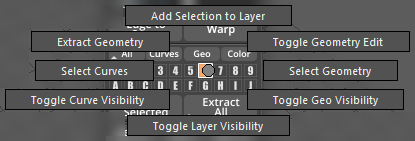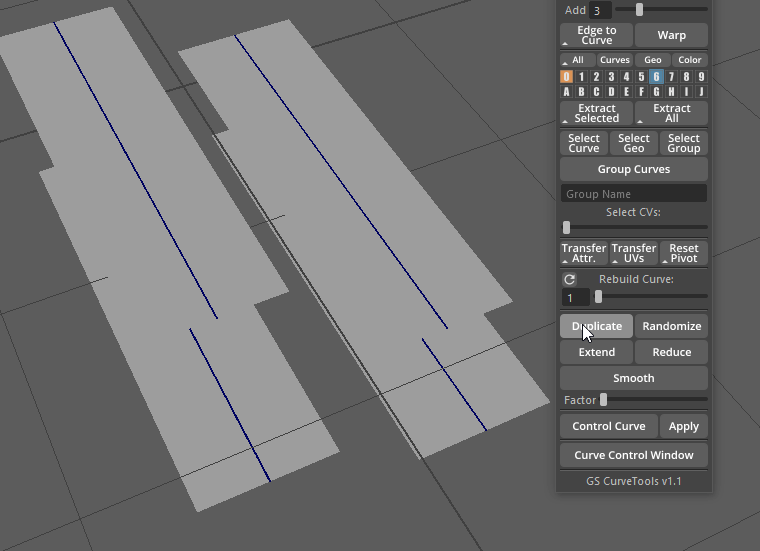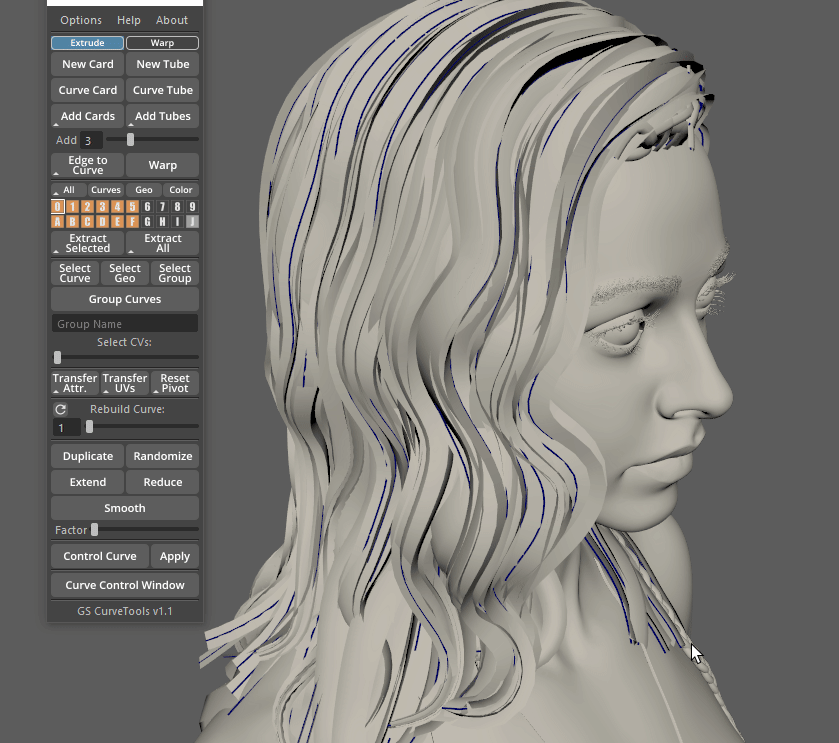Layers
Intro
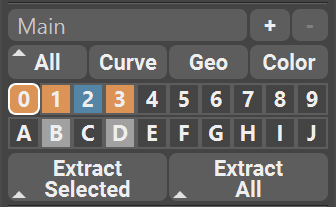
Layers is a powerful and intuitive organization system within GS CurveTools. It has a lot of options to group together, change visibility and editability of curves generated by the plug-in.
There are four Filters and 20, 30, 40, 60 or 80 Layers available for the user, as well as dedicated buttons to quickly extract and combine geometry from all Layers.

Number of layers can be changed in the Options⇨Number of active Layers
Filters
Filters show and hide curves or geo components on all layers. There are three Filters and one color toggle available:
Filter All (or Show/Hide All) - this filter will show all the hidden Curves and Geometry in all the layers. By pressing Shift and clicking on All button you will instead Hide all the Curves and Geometry. Using Ctrl modifier will apply the changes to all layer collections. |

|
Filter Curves - this filter will show only Curves and hide the Geometry in all the Layers. Also has Marking Menu (Hold RMB) that allows for the toggle of “Always on Top” visibility mode. Using Ctrl modifier will apply the changes to all layer collections. |

|
Filter Geo - this filter will show only Geometry and hide all the Curves in all the Layers. Using Ctrl modifier will apply the changes to all layer collections. |

|
Color - this toggle will activate a special Color Mode. In this mode all the Geometry will be colored based on the Layer color. More info is in the layer collections section. |

|
Layer Controls
Layers are exclusive to each other. Single curve can not be in two Layers at the same time.
Here are all the hotkeys and motions available for layers:
Clicks (LMB):
LMB Click - highlights the layer (white outline). All the new curves (except for duplicated ones) will automatically be placed into highlighted layer.
Ctrl + Click - exclusively selects curves from single layer (Fig. 6)
Shift + Click - additively selects curves from multiply layers (Fig. 7)
Alt + Click - hide/show selected layer.
Ctrl + Shift + Click - show/hide curve components of the selected layer.
Ctrl + Alt + Click - show/hide geometry components of the selected layer.
Shift + Alt + Click - isolate select selected layer.
Shift + Alt + Ctrl + Click - toggle always-on-top curve visibility for the selected layer (Maya 2022+).
Motions (MMB):
MMB + Drag - move the contents of one layer to another layer (Fig. 8). Combines the layers if the target layer is not empty.
MMB + Shift + Drag - copy the contents of one layer to another layer (Fig. 9). Copy and combine if target layer is not empty.
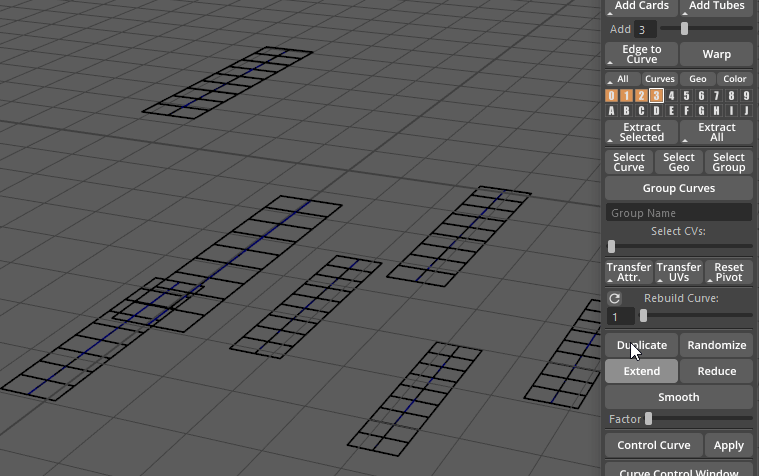
Fig. 6 Exclusive layer selection |
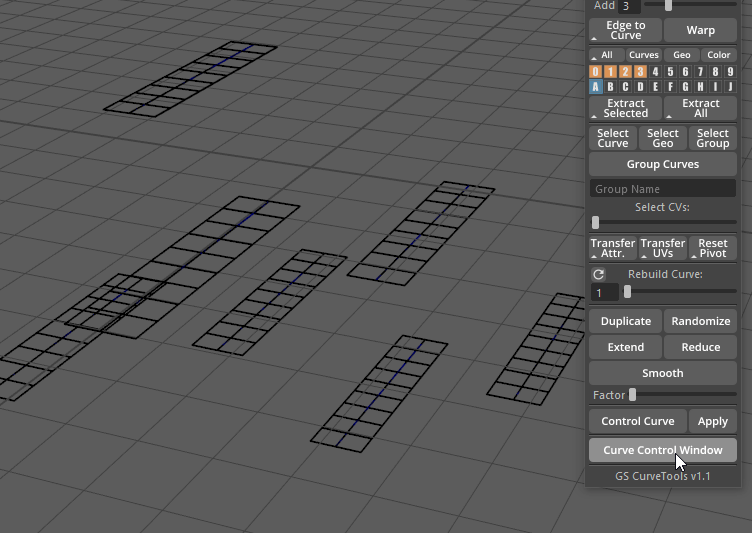
Fig. 7 Additive layer selection |

Fig. 8 Moving layers using MMB |

Fig. 9 Merging layers using MMB |
Note
Holding RMB on any layer will open a Marking Menu with additional commands.
Layers are utilizing native Maya display layer system.
They are typically named curveGrp_#_Curve, curveGrp_#_Geo, curveGrp_#_Inst and can be found in Windows⇨Relationship Editors⇨Display Layer window.
Starting from v1.3 GS CurveTools layers are hidden from Channel Box/Layer Editor Window.
Warning
User should NOT delete or rename any display layers created by GS CurveTools.
Color Coordination
Each Layer is color coordinated depending on its visibility or editability:
Default “Empty” color indicates that the layer has no curves assigned to it. |
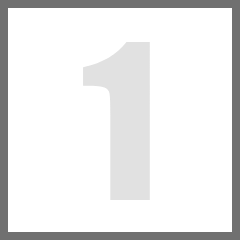
|
“Filled” Layer color indicates that there is at least one curve assigned to this Layer, this layer geometry is NOT editable (not selectable in the viewport) and both Geometry and Curve is visible. |
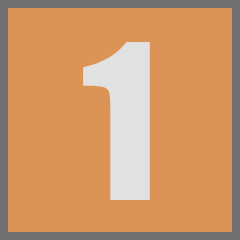
|
“Editable” Layer color indicates that there is at least one curve assigned to this layer and its geometry is currently selectable and editable in the viewport. |
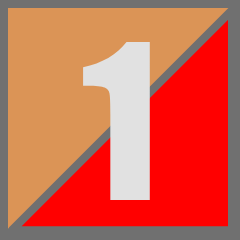
|
“Only Geometry Visible” Layer color indicates that there is at least one curve assigned to this layer, the curves are hidden and only geometry is currently visible. |
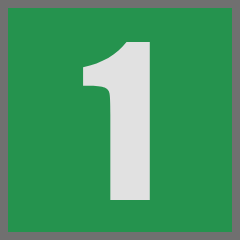
|
“Only Curves Visible” Layer color indicates that there is at least one curve assigned to this layer, the geometry is hidden and only curves are currently visible. |
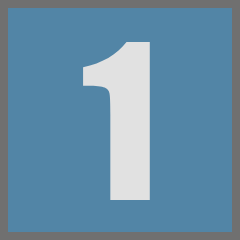
|
“Hidden” Layer color indicates that there is at least one curve assigned to this layer and both geometry and curves are hidden in the viewport. |
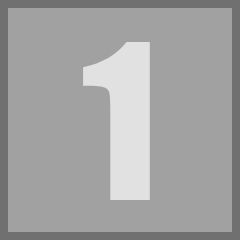
|
